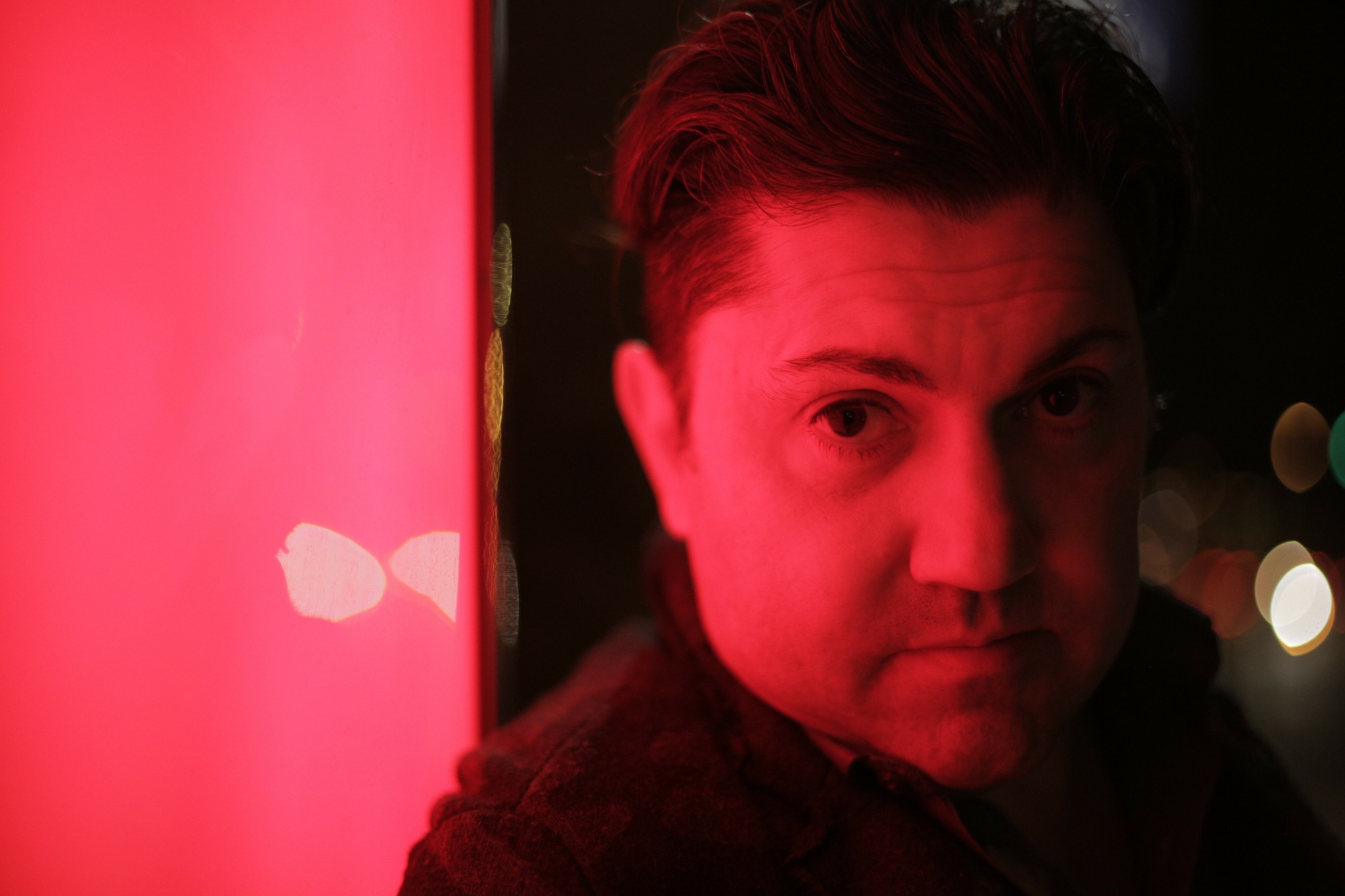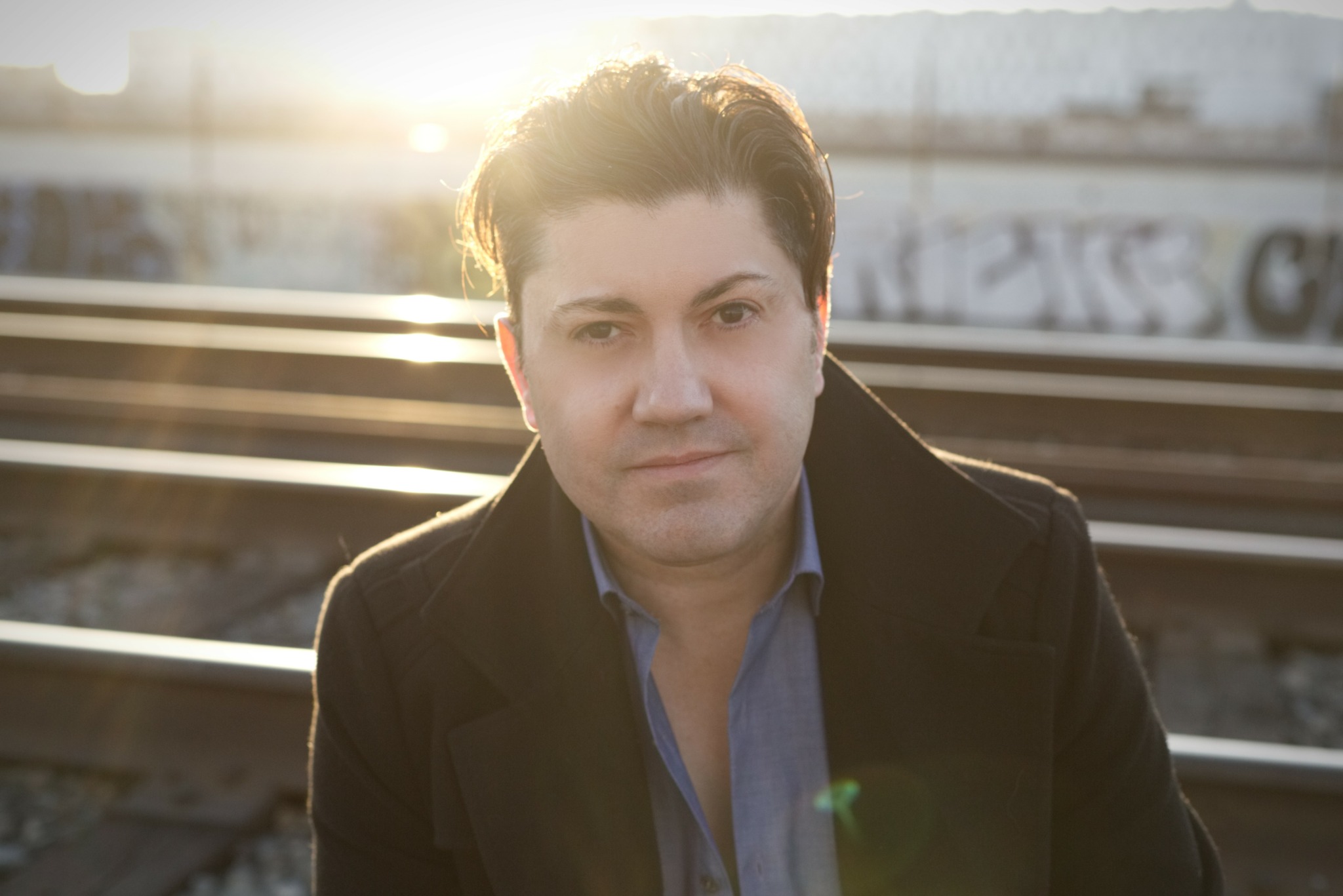We recently connected with Kays Al-Atrakchi and have shared our conversation below.
Kays, appreciate you joining us today. Can you talk to us about how you learned to do what you do?
I entered the industry straight out of school in the ’90s, and it was such a fascinating time to get into film music composition. The field was undergoing a major shift—from the traditional “old school” methods using analog gear to the exciting new world of digital technology. For the first time, composers had access to tools that made things possible that would’ve been unthinkable just a few years earlier.
Experiencing the tail end of that analog era gave me a deep appreciation for the new capabilities that digital tech offered. At the same time, the indie film scene was just beginning to take off, and that played a huge role in shaping my early career. I had the chance to collaborate directly with young, passionate filmmakers such as Daniel Myrick and Eduardo Sanchez who were telling stories outside of the traditional studio system and who would go on to direct The Blair Witch Project. This allowed me to rack up a lot of hands-on experience quickly and build a solid network—something that would’ve taken much longer had I followed the more traditional path of interning, assisting a more established composer, and slowly working my way up.
Jumping straight into the deep end also gave me the space to develop a sound that was uniquely mine, without being overly shaped by another composer’s style. Of course, there were downsides too. While I was fortunate to earn some great credits and recognition early on, I didn’t have a mentor to guide me through the business side of things. That led to some tough lessons.
For example, I had little to no understanding of how to value my work or negotiate contracts. I got taken advantage of more than once and didn’t always protect my intellectual property the way I should have. It took time—and a few hard knocks—for me to get smarter about contracts and, more importantly, about securing my rights.
One of the key revenue sources for composers working in film and media is royalties—payments made every time a piece of music is broadcast. These can often surpass the initial fee and provide a steady stream of income for years after a project is released. It is vital for composers to protect those rights, but sadly, even today, most music programs don’t do enough to prepare students for the complex legal and business landscape they’ll face once they graduate.

Kays, before we move on to more of these sorts of questions, can you take some time to bring our readers up to speed on you and what you do?
My journey into film music began in the mid-1980s when I purchased my first soundtrack—Escape From New York by John Carpenter. That experience was transformative, and from that moment, I knew composing for film was something that I wanted to pursue. As a teenager with limited access to music-making tools, I began exploring composition and songwriting alongside other emerging talents—one of whom was Rob Thomas, who would go on to form the multi-platinum selling band Matchbox Twenty and co-write the international hit “Smooth” with Santana.
In the 1990s, I graduated from the renowned Berklee College of Music in Boston, where I majored in film scoring and music production. After completing my studies, I relocated to Orlando, Florida, where I began working as a composer and producer with several recording studios. During this time, I also immersed myself in the burgeoning electronic and dance music scene, drawing influence from industrial acts like Skinny Puppy and Nine Inch Nails. This period led to production collaborations with various emerging artists, live performances, and multiple releases through local collectives and independent labels.
By the late ’90s, I established an exclusive partnership with the post-production studio Sound ‘O’ Rama and began focusing on scoring for live events and immersive experiences. I composed original music for major U.S. tours produced by Nickelodeon Studios, multimedia installations at Sony’s Technology Museum in New York, and educational exhibits such as Wondercamp. I also created custom attraction music for Universal Studios theme parks.
In the early 2000s, I moved to Los Angeles and resumed my long-term creative partnership with director Daniel Myrick, best known for the global success The Blair Witch Project. My work as a film composer expanded to include projects for major studios such as Warner Bros. (Believers, Alien Raiders), Lions Gate (The Bros, Mayor Cupcake), Archstone (Awaken, Big Kill), and Walt Disney Studios (Nelson Bixby). I also scored numerous television series for Discovery Channel, History Channel, Lifetime, SyFy, and Speed Network, along with dozens of national and international advertising campaigns.
Over the years, I’ve received numerous accolades, including Best Original Score at the Milan International Film Festival (MIFF) in Italy. I was also inducted into the DAVE School Hall of Fame in recognition of my musical contributions to their various productions.
In 2010, I expanded my creative scope to include directing films and music videos—realizing a lifelong goal inspired by John Carpenter’s dual career as both a filmmaker and composer.
In the latter part of the decade, I returned to composing for large-scale live events, including a multimedia concert in China for the grand opening of Atlantis: Sanya, as well as Microsoft’s global product launch presentations in 2019 and 2020.
In 2022, I partnered with the Georg Eckert Institute (GEI) in Germany to compose and produce music for educational programming distributed across the African continent. This initiative included the creation of numerous videos and multimedia presentations.
I’ve been invited to speak at a number of educational and industry events focused on the intersection of music and technology, including sessions hosted by UCLA, Digital Media Artists of Los Angeles, and SideFX. Additionally, I’m a regular contributor to several online publications, including Synth & Software magazine, where I write on topics such as electronic music production, modular synthesis, and the evolving role of AI, machine learning, and neural networks in creative workflows.
I believe that what sets me apart from most of my peers is my ability to balance two often opposing forces: a deeply personal artistic vision and a genuine respect for the collaborative nature of filmmaking. I don’t see myself as a technician in the background; but rather a storyteller who listens, adapts, and contributes with purpose, all while remaining true to my creative instincts. My focus has always been on the connection with human emotion. This goes beyond technical skill—it’s a form of emotional craftsmanship that sets my work apart from the rest.
What can society do to ensure an environment that’s helpful to artists and creatives?
When I first began my journey, it already felt like the world was in the midst of rapid change. But looking back, those shifts pale in comparison to the seismic transformations we’re experiencing today. The way art is created, distributed, and consumed has evolved dramatically—and with the rise of artificial intelligence, that evolution is only accelerating.
To put it in perspective: roughly 3.7 million new videos are uploaded to YouTube every single day. That’s about 2,500 videos every minute. Let that sink in. The sheer volume of creative output being generated on a daily basis is overwhelming. In this kind of landscape, how can emerging artists hope to stand out? How do we, as a society, even begin to process and engage meaningfully with so much content?
I believe we’re at a point where we need to retrain ourselves—not only in how we discover and interact with the arts, but in how we define art itself. In an era where a simple text prompt can produce music, imagery, and even entire narratives that feel remarkably authentic, we’re faced with new and complex questions: What is art? Who is the artist? And how should we respond to this shift?
I recently came across an AI-generated band that has already amassed over a million listeners. That’s remarkable. Clearly, this music is resonating with people, bringing them enjoyment. Does the fact that it was created by a machine diminish its value? Should we fault audiences for finding meaning or pleasure in it? These are the types of questions that we need to be able to answer as we navigate further into this new creative landscape.
So when people ask how society can continue to support artists in this evolving landscape, my answer is simple: keep listening. Keep discovering. Keep engaging with new music and creative voices—and don’t take any of it for granted. I still believe in the power of quality to rise above the noise. Good work gets noticed. The most important thing we can do is to stay open-minded and curious. Dig a little deeper. Go beyond the surface to uncover music that moves you, inspires you, and makes life meaningful.

For you, what’s the most rewarding aspect of being a creative?
One of the most rewarding moments for me as a film composer is sitting in a theater and watching the finished film with a live audience. It’s that rare, magical moment where everything we’ve worked toward finally reveals itself—not just on the screen, but in the reactions of the people around us.
Up until that point, filmmaking is largely an act of faith. And I know that might sound strange at first. But think about it: everyone involved in bringing a film to life—the director, the writers, the actors, the editors, the composers—we’re all working from a vision, doing our best to bring that vision into reality. We collaborate, we refine, we obsess over the smallest details, all in pursuit of the most truthful, resonant version of the story we can tell.
But throughout the process, we’re also filled with doubt. Will the audience laugh at the funny moments? Will the emotional beats land the way we hope? Or worse—will a moment intended to move them end up falling flat? These questions never go away, no matter how much experience you have. Because at the heart of it, film is both a deeply collaborative art form and an intensely personal one. Each person pours a piece of themselves into the work, hoping that it will connect.
That’s why watching it with an audience is such a profound experience. When people laugh where they’re supposed to laugh, when they’re moved during the quiet, emotional moments—those reactions are everything. That is the true reward. It’s the validation that our instincts were right, that the choices we made resonated with someone who had no prior knowledge of our process—only the finished result.
Ultimately, art isn’t just about expression—it’s about connection. And when that connection is made, everything we’ve poured into the work becomes worth it.
And I think I speak for many in the creative world when I say: there’s nothing quite like that moment. When strangers feel something because of the choices you made—that’s the heartbeat of art. That’s the connection we all strive for. To receive confirmation of that connection in real time? It’s a feeling that’s hard to describe, but impossible to forget.
Contact Info:
- Website: https://www.musicbykays.com
- Instagram: https://www.instagram.com/kaysfilmmaker
- Youtube: https://www.youtube.com/@kaysfilmmaker
- Other: https://mbkproductions.bandcamp.com

Image Credits
Photos 1 and 2 – Brian Luco Peña
Photo 3 – Alessandro Gentile
Photo 4 – Kays Al-Atrakchi


